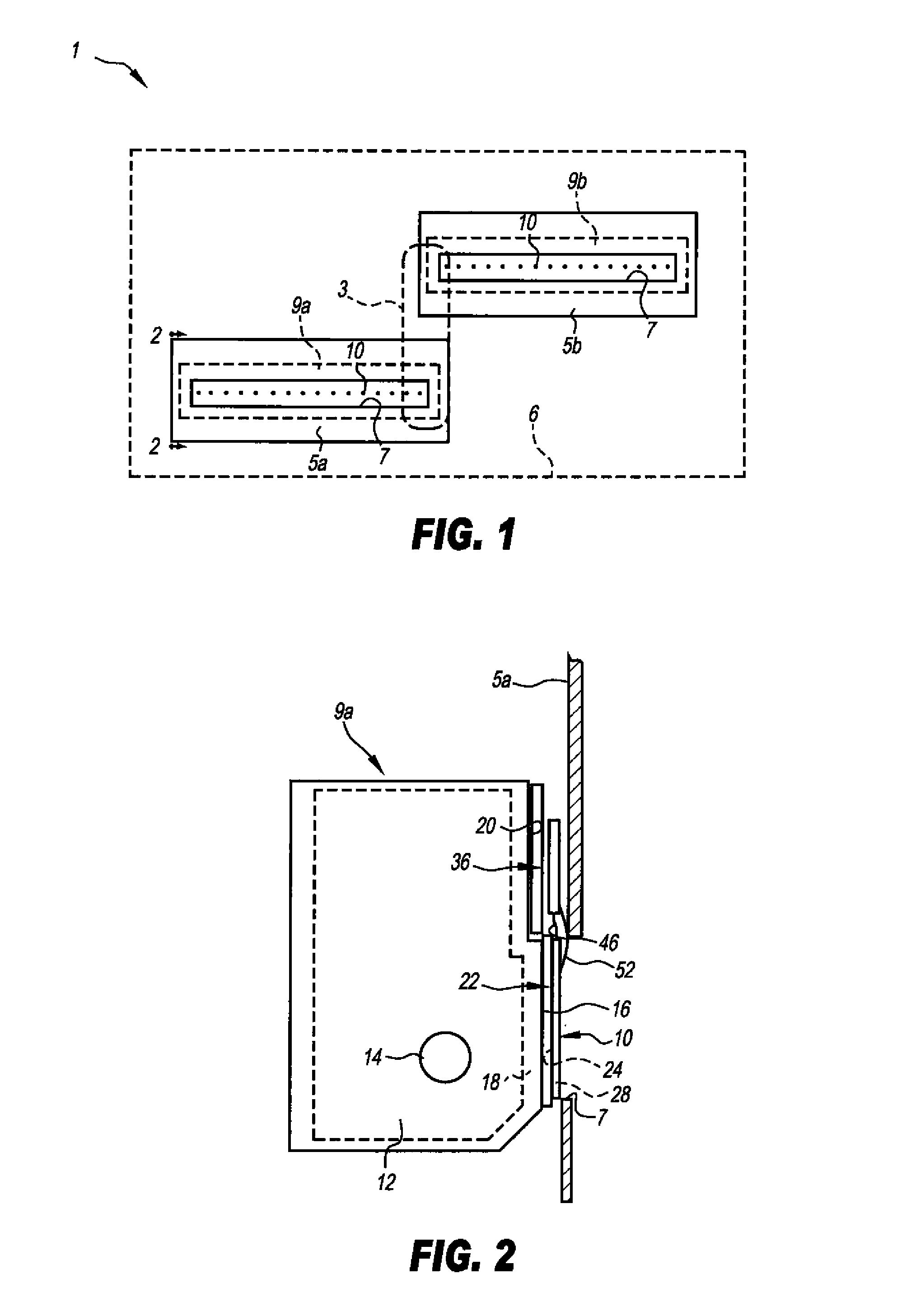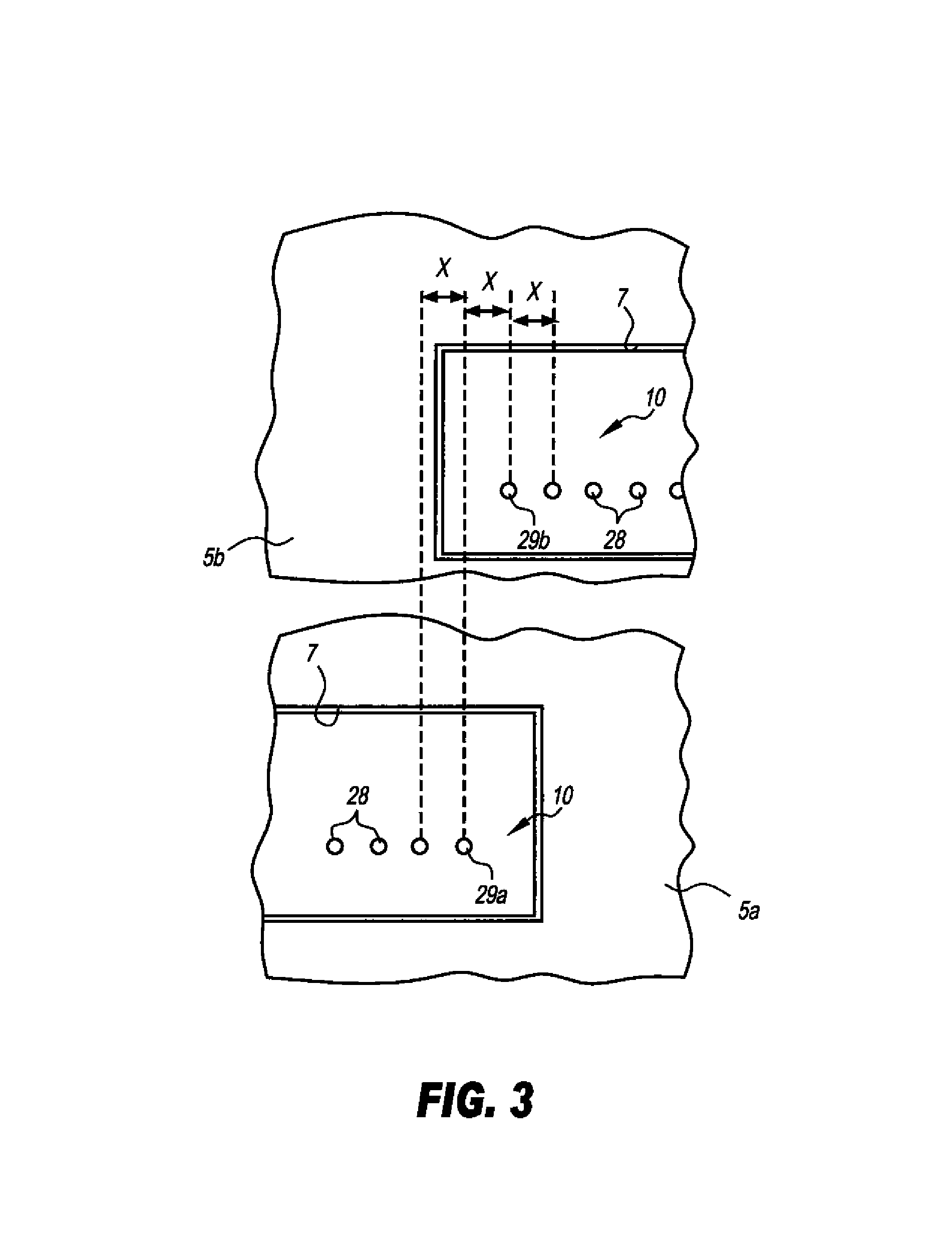Recyclable continuous ink jet print head and method
a continuous ink jet and print head technology, applied in the direction of inking apparatus, printing, adhesive processes, etc., can solve the problems of degrading the quality of the printing at the joint between the two dies, affecting the transfer of heat, and the low thermal conductivity of ceramic materials, so as to achieve high thermal conductivity and effectively soften the
- Summary
- Abstract
- Description
- Claims
- Application Information
AI Technical Summary
Benefits of technology
Problems solved by technology
Method used
Image
Examples
example 1 (
Control)
A 4.3 inch long Si die containing nozzles and microelectronics circuitries was bonded to a stainless steel manifold using Hysol QMI 550EC adhesive (from Henkel Corporation, San Diego, Calif.), Before curing the die bond, the distance between the center of the first to the center of the last, or 2560th, nozzle was measured by a Smartscope Quest 650, made by Optical Gauging Products, Rochester, N.Y.), and found to be 108.324 (+−0.0005) mm. After curing to 120 C for 1 hr, and cooling to room temperature, the same measurement was found to be 108.262 mm. The array of nozzles had shrunk by 62 microns. The high curing temperature produced a relatively large dimensional change in the die that is outside of acceptable tolerances.
example 2 (
Control)
A 4.3 inch long Si die containing nozzles and microelectronics circuitries was bonded to a stainless steel manifold using QMI 536 1A2 adhesive (from Henkel Corporation, San Diego, Calif.). Before curing, the distance between the center of the first to the center of the last, or 2560th nozzle was measured to be 108.323 millimeters. After thermal curing to 80 C for 2 hr, and then cooling to room temperature, the distance between the first to the last or 2560th nozzle was measured to be 108.290 millimeters. The nozzle array had shrunk by 33 microns. By going to a lower curing temperature, the CTE mismatch between the die and the manifold manifested relatively less dimensional change. However, the dimensional change of 33 microns is still outside the range of acceptable tolerances.
example 3 (
Invention)
An Al / SiC interposer (made of MCX-724, from Thermal Transfer Composite LLC, Newark, Del.) cut to the same outer dimension as the 4.3 inch long Si die, was bonded to the stainless steel manifold using QMI 536 1A2 adhesive. This was then treated at 80 C, for 2 hr. Then a 4.3 inch long Si die containing nozzles and microelectronics circuitries was bonded to the Al / SiC interposer using QMI 536 1A2 adhesive. Before curing, the distance between the center of the first to the center of the last, or 2560th, nozzles was measured to be 108.323 millimeters. After thermal curing to 80 C, for 2 hr, and then cooling to room temperature, the distance between the first to the last, or 2560th nozzle was measured to be 108.307 millimeters. The nozzle array had shrunk by 16 microns. By going to a lower curing temperature, and using an interposer with a CTE approximately half way between those of the manifold and the die, the dimensional change is reduced to within acceptable tolerances.
For m...
PUM
| Property | Measurement | Unit |
|---|---|---|
| temperature | aaaaa | aaaaa |
| temperature | aaaaa | aaaaa |
| distance | aaaaa | aaaaa |
Abstract
Description
Claims
Application Information
 Login to View More
Login to View More - R&D
- Intellectual Property
- Life Sciences
- Materials
- Tech Scout
- Unparalleled Data Quality
- Higher Quality Content
- 60% Fewer Hallucinations
Browse by: Latest US Patents, China's latest patents, Technical Efficacy Thesaurus, Application Domain, Technology Topic, Popular Technical Reports.
© 2025 PatSnap. All rights reserved.Legal|Privacy policy|Modern Slavery Act Transparency Statement|Sitemap|About US| Contact US: help@patsnap.com



